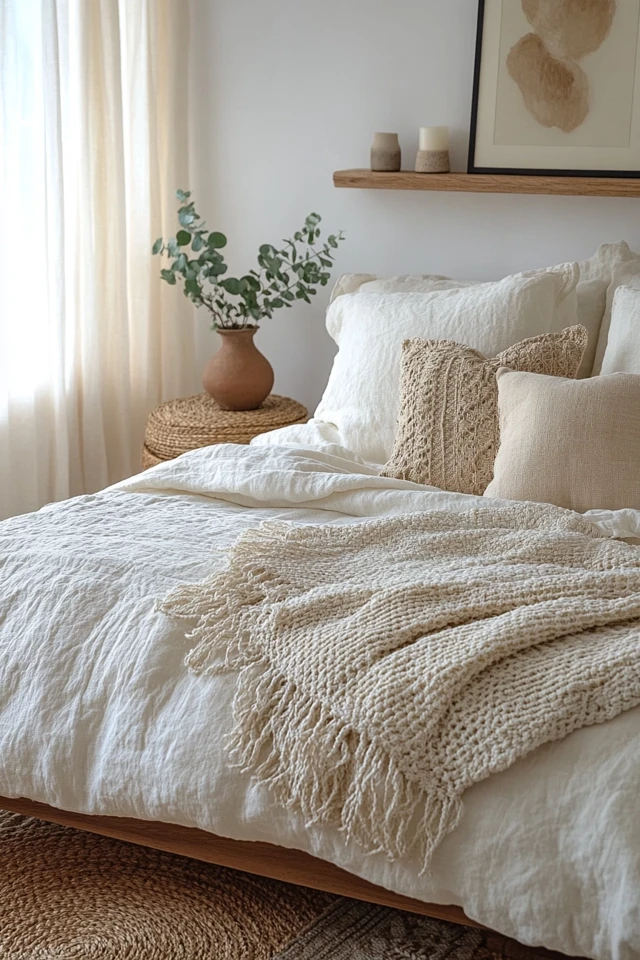The minimalist bohemian style blends two seemingly opposite design approaches: the simplicity and order of minimalism with the warmth, texture, and personality of bohemian decor. The result is a clean, uncluttered space with just the right amount of cozy, eclectic charm. This pared-down boho aesthetic focuses on intentional choices, natural materials, and carefully curated decor, creating a calm, stylish, and functional environment.
In this guide, we’ll show you how to design a minimalist bohemian room that combines clean lines, earthy tones, and curated boho accents for a perfectly balanced look.
1. Start with a Neutral Color Palette
A minimalist bohemian space begins with a clean, neutral color palette. Light tones allow the room to feel airy, open, and calm while serving as a backdrop for boho elements.
Key Neutral Colors:
- Soft Whites: Pure or warm whites for walls, furniture, and bedding.
- Beige and Cream: Earthy, neutral shades for rugs, curtains, and throws.
- Greys and Taupes: Subtle grounding tones for balance.
How to Use It:
- Paint walls a soft white or light beige for a serene foundation.
- Use neutral furniture like linen sofas or light wooden tables.
- Add depth with earthy-toned accents like pillows, throws, or ceramics.
Pro Tip: Stick to a neutral base, then bring in pops of color through subtle boho decor pieces like art or plants.
2. Embrace Clean Lines and Simple Furniture
Minimalist spaces thrive on functionality and simplicity. Choose furniture with clean lines, light tones, and a focus on practicality.
Best Furniture for a Minimalist Boho Room:
- Low-profile sofas and chairs: Opt for linen, rattan, or light wood frames.
- Simple wooden or rattan tables: Natural materials add texture without clutter.
- Neutral bed frames: Choose light wood or upholstered headboards for a soft, minimalist look.
Pro Tip: Keep furniture pieces streamlined and avoid excessive ornamentation—less is more in a minimalist boho space.
3. Layer Natural Textures
Minimalist bohemian design is about quality over quantity, but it still celebrates texture. Incorporating a variety of natural materials adds warmth and prevents the space from feeling stark or cold.
Textures to Include:
- Rattan and Wicker: Use rattan chairs, pendant lights, or woven baskets.
- Linen and Cotton: Choose soft textiles for bedding, curtains, and throws.
- Jute and Wool: Use neutral rugs for added depth and comfort.
- Wood: Light or unfinished wood furniture and accents complement a minimalist boho vibe.
Pro Tip: Focus on just a few textural elements for each room—a jute rug, linen bedding, and a rattan chair can instantly elevate the space.
4. Keep Decor Simple and Curated
Bohemian style often leans toward maximalism, but in a minimalist boho room, less is more. Instead of filling the space, choose fewer, meaningful pieces that make an impact.
Minimalist Boho Decor Ideas:
- Use macramé wall hangings for texture without overwhelming the space.
- Style shelves with ceramics, woven baskets, or a few well-chosen books.
- Hang one or two pieces of neutral artwork with abstract or nature-inspired designs.
- Incorporate plants for a touch of greenery and life.
Pro Tip: Choose decor that serves both form and function, like woven storage baskets or stylish planters.
5. Incorporate Greenery for a Natural Touch
Plants are a must-have for any bohemian space, but in a minimalist setting, choose a few statement plants rather than overcrowding the room.
Best Plants for Minimalist Boho Spaces:
- Snake Plant: Adds height and thrives in low-maintenance conditions.
- Monstera: A large-leaf plant that brings life to an empty corner.
- Pothos: Perfect for trailing from shelves or hanging planters.
- Fiddle-Leaf Fig: A bold statement plant that elevates any room.
How to Style Plants:
- Use simple terracotta pots, ceramic planters, or woven baskets.
- Place plants in empty corners or on shelves to create visual balance.
Pro Tip: Stick to 2-3 larger plants instead of multiple small ones for a clean and cohesive look.
6. Choose a Statement Rug
A well-chosen rug can anchor your minimalist boho space while adding warmth and texture.
Minimalist Boho Rug Ideas:
- Jute or Sisal Rugs: Neutral, natural fibers that complement minimalist design.
- Subtle Patterns: Persian or tribal rugs in muted tones.
- Soft Shag Rugs: Adds comfort and texture underfoot without overpowering the space.
Pro Tip: Stick to a neutral or earth-toned rug, and layer a smaller patterned rug on top if you want a subtle boho touch.
7. Use Soft, Layered Lighting
Lighting is key to achieving a cozy, minimalist boho vibe. Avoid harsh overhead lights and opt for softer, ambient lighting instead.
Lighting Ideas:
- Hang a rattan pendant light as a natural focal point.
- Use simple table lamps with fabric or wicker shades for warm light.
- Add string lights or LED candles for a soft, inviting glow.
Pro Tip: Choose warm-toned light bulbs to enhance the cozy, bohemian atmosphere.
8. Create Empty Space for Balance
One of the defining characteristics of minimalism is the use of negative space—allowing room to breathe.
How to Keep It Minimal:
- Avoid overcrowding walls or shelves with decor.
- Leave empty space between furniture to create visual balance.
- Use clean surfaces like tabletops to highlight one or two statement pieces.
Pro Tip: In a minimalist boho room, every item should have a purpose—either functional or aesthetic.
9. Incorporate Soft, Layered Textiles
Textiles are a core bohemian element, but in a minimalist space, focus on quality and subtle layering rather than quantity.
How to Layer Textiles:
- Drape a linen throw blanket over a sofa or bed.
- Use neutral-toned cushions with fringe or tassels for added texture.
- Hang sheer linen curtains to filter natural light softly.
Pro Tip: Stick to one or two types of textures (like linen and cotton) to maintain a clean and cohesive look.
10. Add Subtle Bohemian Patterns
While minimalism favors simplicity, subtle boho patterns can bring personality to the space.
Where to Use Patterns:
- Add a tribal or geometric print through throw pillows or blankets.
- Use a rug with a muted boho design for subtle contrast.
- Incorporate a simple wall hanging with macramé or abstract motifs.
Pro Tip: Stick to patterns in earthy or neutral tones to avoid overwhelming the minimalist aesthetic.
Picture Gallery
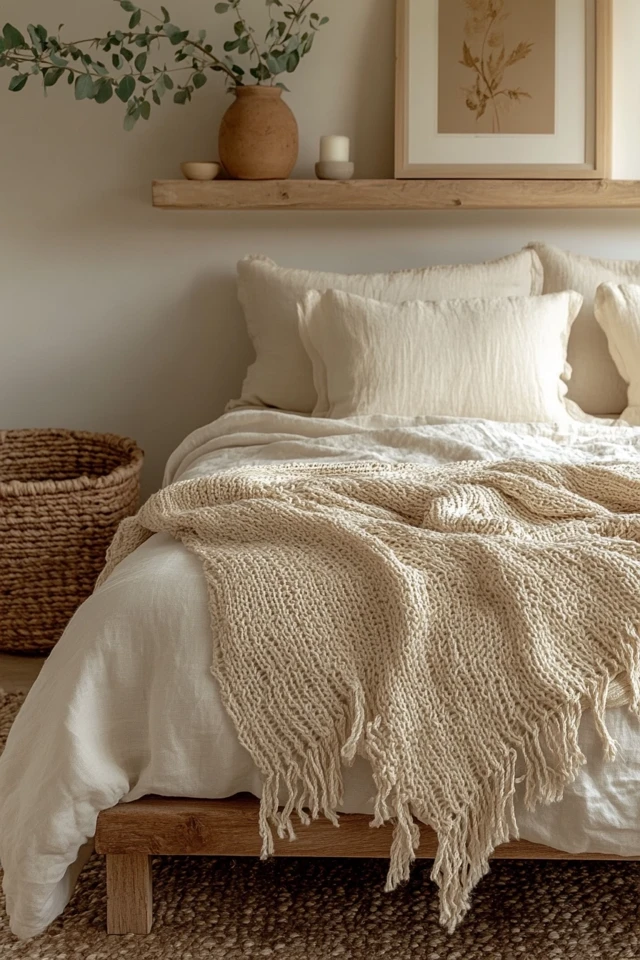
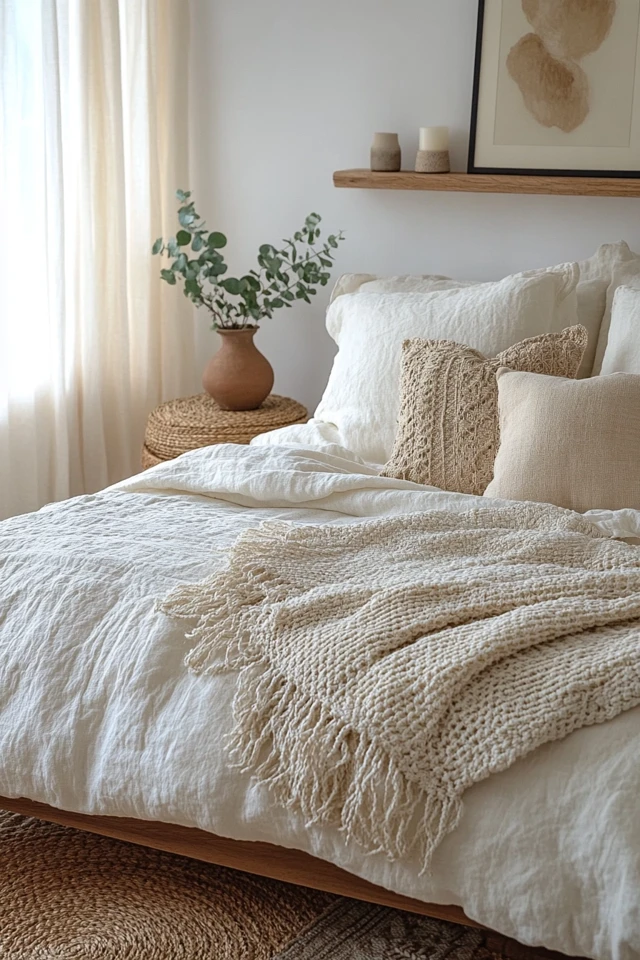
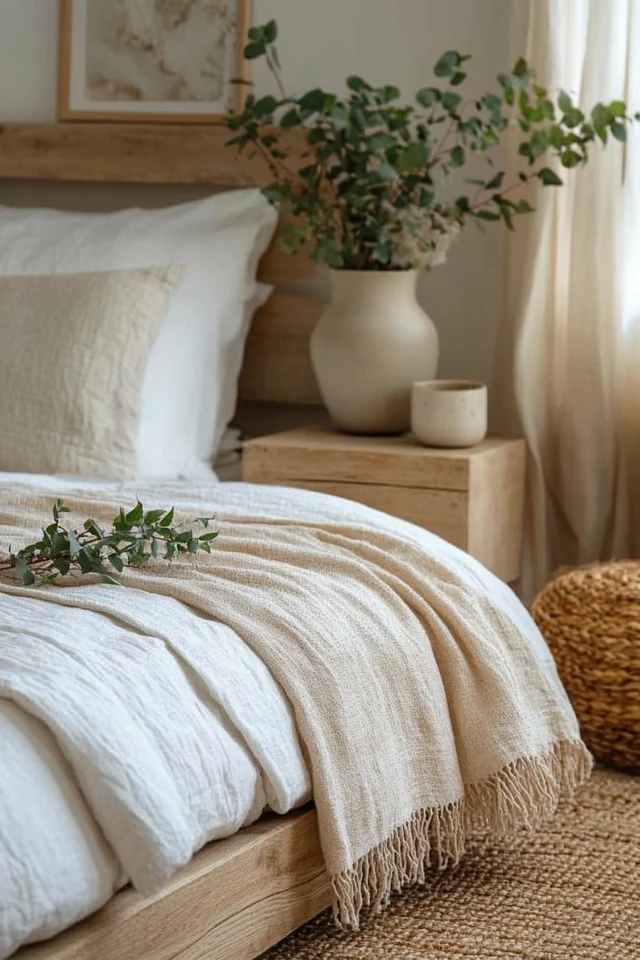
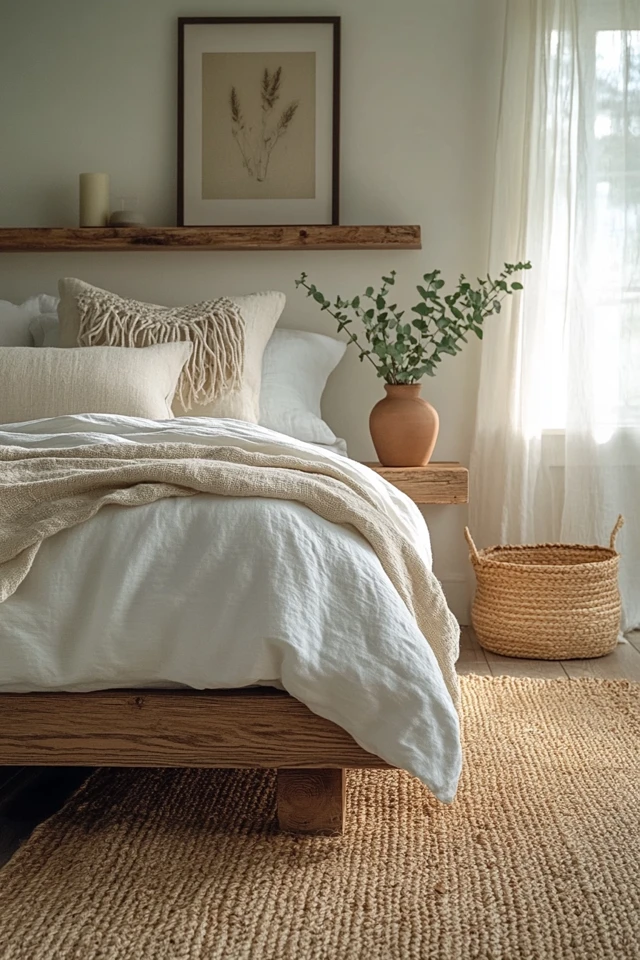
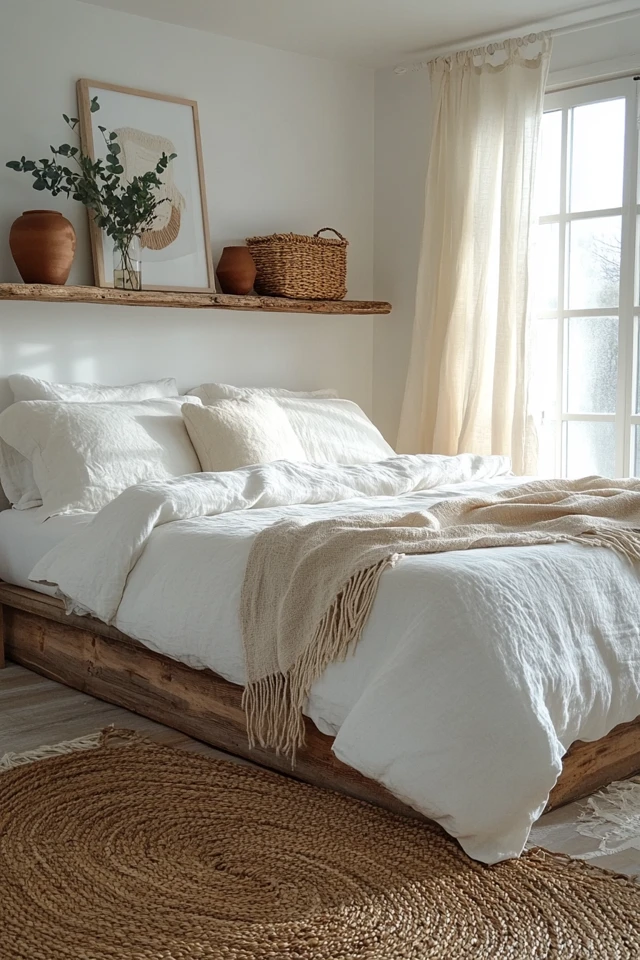
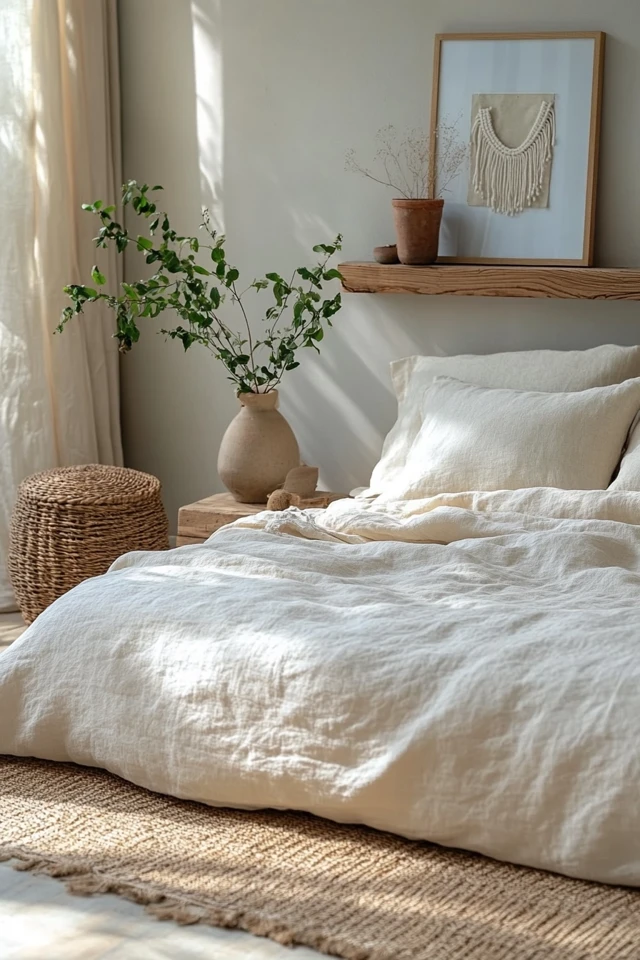
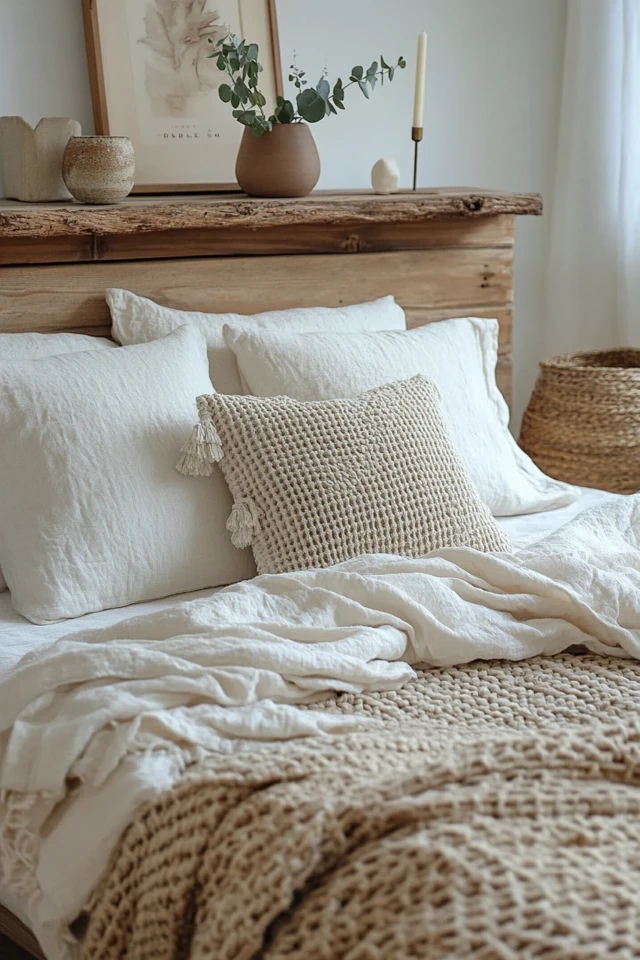
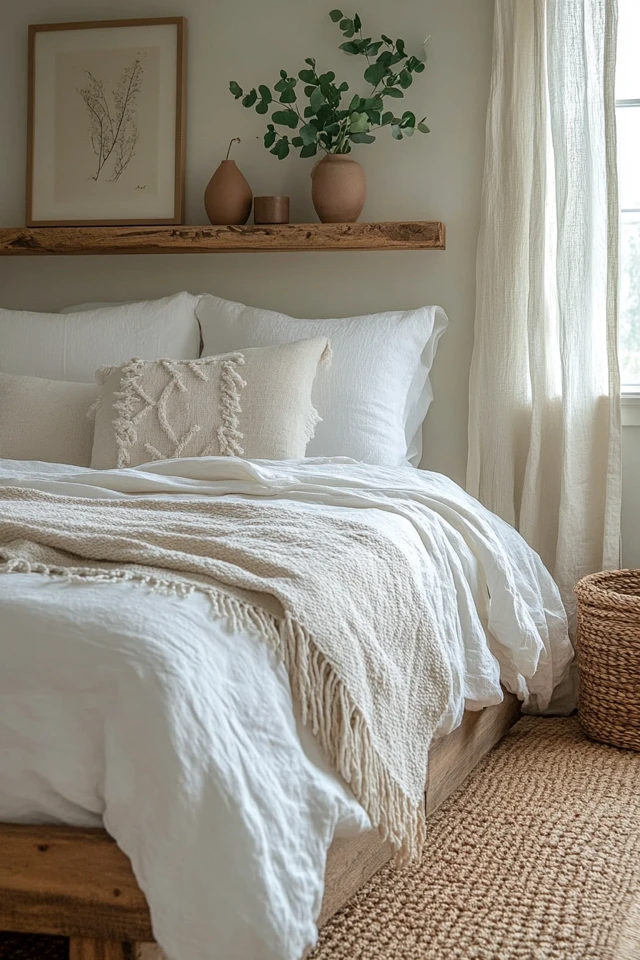

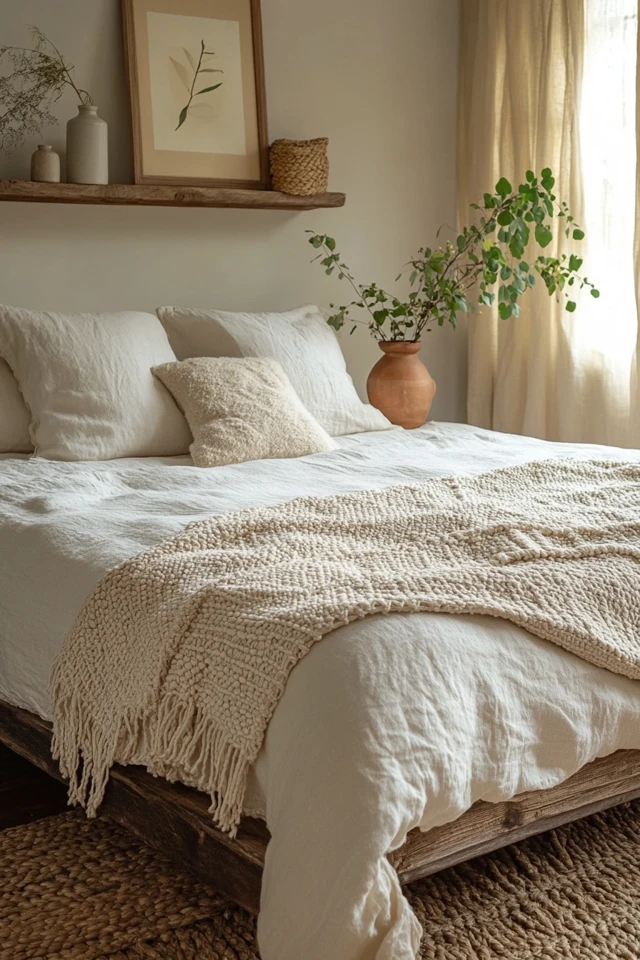
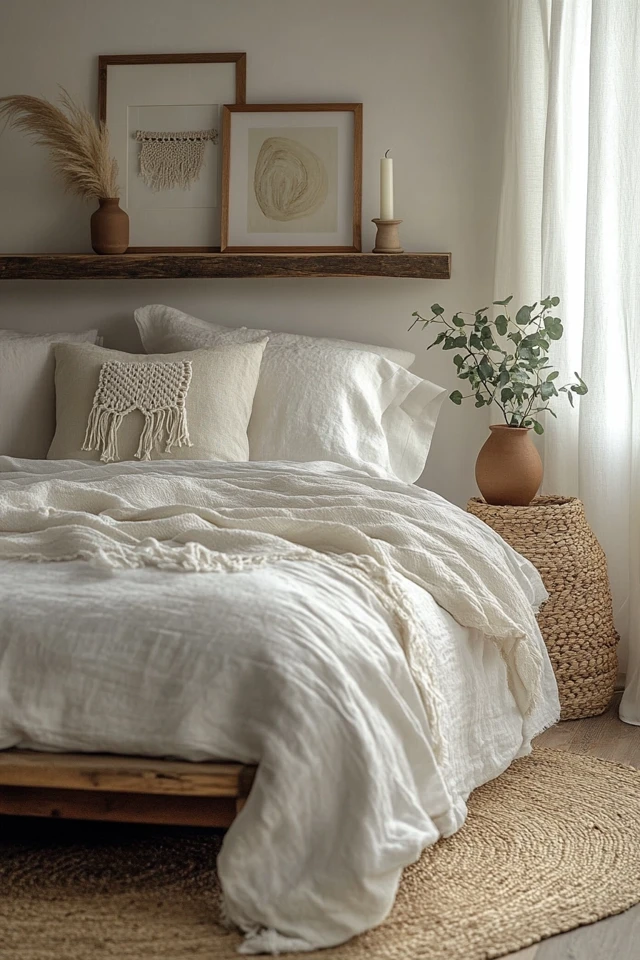

Conclusion
A minimalist bohemian room is the perfect fusion of clean simplicity and boho warmth. By embracing a neutral color palette, incorporating natural textures, and carefully curating your decor, you can achieve a clean, airy space with just the right amount of cozy charm. Focus on quality over quantity, use greenery for a natural touch, and create balance with intentional negative space.
The result? A beautifully styled room that feels calm, uncluttered, and full of bohemian soul—proof that minimalism and boho can coexist in perfect harmony.
FAQ
1. What is the difference between boho and minimalist boho?
Boho style embraces maximalism with layers of decor, while minimalist boho focuses on clean lines, neutral tones, and curated, intentional styling.
2. What colors work best for a minimalist boho room?
Soft whites, beige, taupe, and earth tones like terracotta, olive, or muted grays work best.
3. How do I add texture to a minimalist boho room?
Incorporate natural materials like linen, cotton, jute, rattan, and woven fabrics through rugs, throws, and furniture.
4. How can I decorate with plants in a minimalist way?
Use a few statement plants like snake plants or fiddle-leaf figs in simple ceramic or woven planters.
5. What are the must-have elements for a minimalist boho space?
Neutral walls, natural textures, layered textiles, simple furniture, greenery, and carefully curated decor pieces are essential.

